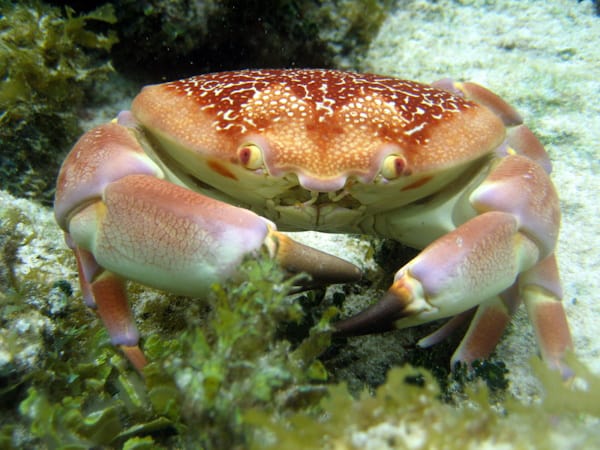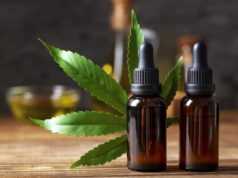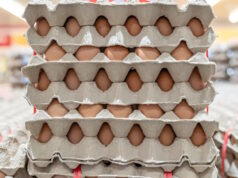
Reading Time: 7 minutes
Crabs are popular little critters for a few key reasons. They’re fun to catch, delicious to eat, and they can be used as bait to catch other species. If that caught your attention, then it will be beneficial to learn how to catch Crabs so you can get your hands on your own – and save some money too!

In this article, I’m here to give you all the insights and tips for catching crab. From identifying different species to techniques, seasons, and more… Let’s get started!
Common Crab Species

Before I name a few popular species, just keep in mind there are around 7,000 species of Crab out there, Depending on what part of the world you’re in, you may find completely different species every time you go out. But that also means you have a great chance of locating some Crab whenever you’re close to saltwater. Here are a couple of common Crab species you may run into:
- Stone Crab. This group is one of the most popular Crab species out there, with plenty of anglers getting their hands on them. You can use them in many recipes, and fishermen target them for their meaty claws.
- Fiddler Crab. If you’ve been to a beach before, the chances are you may have seen this species. These red crustaceans are well-populated across the globe. Fiddler Crabs like to stroll along the sand and hide in little holes when necessary. Anglers enjoy using these guys for bait, but they’re pretty small, so they aren’t really consumed.
- Blue Crab. These guys aren’t just cool looking, but they’re tasty too! You can harvest Blue Crab in the Atlantic Ocean and Gulf of Mexico, where families and keen seafood lovers go wild for them!
- Sand Crab. Also known as Sand Fleas, these are a popular fishing bait for many species. You can dig them up in the sand while visiting the beach and throw them on your hook.
You’ll most likely come across plenty of other Crab species on your outdoor adventure. But, no matter the species – and whether you catch some big or small – it’s always a thrill!
Where to Find Crab to Catch
While there may be different species, Crabs tend to have a lot in common. For example, these little critters have key habitats that they enjoy living in, hiding in, and searching through when looking for food and shelter. When you go crabbing, it’s best to head to the following kinds of areas and carefully scan around. Sometimes they can be hiding in plain sight!

The best locations to look for Crab include mangroves, shorelines, bays, inlets, marshes, jetties, and piers. They like areas that have structure for them to hide in, such as rocks or taller grass. They’re also big fans of sand – especially smaller, inshore species. Look for holes around shorelines and wet sand, too.
Top Crabbing Hotspots

Of course, there are plenty of hotspots where tons and tons of Crabs are found frequently. From coast to coast, you’ll find numerous honey holes. The most popular spots include the Cheaspeake Bay, North Florida, Louisiana, and Washington’s Puget Sound.
Canada has its own hotspots in Prince Edward Island, Nova Scotia, and all the way across to British Columbia. However, you can run into these crustaceans all over the world. This list will never scratch the surface of where you could go, but here’s an honorable shoutout for Mandjar Bay in Australia, Beagle Channel in Argentina, northern Norway, and Italy – where crabbing is also good for the ecosystem!
When to Catch Crabs

In the above-mentioned areas, you can usually find Crabs throughout the year. However, certain regions and species have more productive months than others. Wherever you are, research the Crab species local to your area, and then discover when the most productive seasons are.
In general, the best season to go Crabbing is typically the summer or fall. These times are usually most productive because the weather is warmer and the Crabs are either fresh out of or are preparing for spawning, which makes them more fired up and hungry. The calmer conditions also help
As for the time of the day, there isn’t anything too specific to follow. Daytime hours are good because the sun is out, which helps you to spot the Crabs better. However, tide is a more important factor. Experienced crabbers say fishing 2 hours before or after high tide is best for Crabbing. This is when the tide tends to become more slack, making it easier for Crabs to access.
Overall, when you’re crabbing, sometimes random conditions will produce great results. The best thing to do is just get out there when you have the opportunity. But if you want to plan around better conditions, then heed some of the advice above.
How to Catch Crabs
Now onto the juicy stuff – how to get your hands on Crabs! You can successfully land Crabs in numerous ways. Try picking them, using a net, or give a trap a try. Let’s take a closer look…
Catching by Hand

Get yourself some of these crustaceans by strolling around shorelines and tidal zones, and simply picking them up from the sand or rocks. Gently grab your Crab in the middle of its shell and be careful if they have any claws! Even if they’re little, the power of their claw clamp is pretty painful.
Using a Net

Nets come in handy when trying to catch Crabs, especially because their little legs take them far quickly! You can use a small bait net or even a cast net. Just make sure you check the regulations for the Crab species you’re targeting.
Crab Traps

Traps are a popular method for crabbing in many areas across the world. You can leave a bunch around various areas and come back to find them full of Crabs. It doesn’t work like this every single time, but it sure feels great to find multiple traps full of Crabs! Most areas require permits for Crab traps so make sure you’re up to date with the latest rules.
Suggested Bait for Crabs

It’s not always that easy to grab a Crab, get one out of its hiding spots, or entice one to enter your trap. That’s when bait comes in handy to lure them in. Crabs are fans of stinky and meaty meals, so getting small, strong-smelling pieces of meat to lay out is what will attract them the most. This can consist of human meats like chicken or marine species like tiny fish, eel parts and clams.
Lay a couple of pieces in the open and wait for a Crab to come out. Then, you can grab them or scoop them up, or you can use a hook.
Crabs also bite artificial lures sometimes, and that’s another option you can try out. The best lures for Crab are any that consist of soft plastic and small hooks.
Crabbing Gear

Now that you have an idea for bait, you need a hook to put it on! In this section, I’ll give you a little insight into helpful gear for crabbing.
First of all, if you’re fishing with a hook, you’ll need one that’s small enough to fit into the Crab’s mouth or claw. Place a little piece of meat on there, lower your hook down into the Crab zone, and wait for that little tug.
Other than that, you’ll want a very light setup. You can go as simple as a light rod with a 1000-spinning reel. Add a 4 lb braid and 10 lb fluorocarbon leader, and you’ve got a good start. You don’t need anything crazy for crabbing, so this simple setup works fine.
If using a net, there are a range of options available. However, there are specific Crab nets to better suit your crabbing needs. In addition to nets, Crab traps are also handy and there are plenty of styles and sizes to choose from.
Extra gear like gloves, shovels, and crab gauges are also helpful when crabbing. You can keep yourself protected from claws with gloves, use shovels to dig them up easily, and measure them to ensure they’re good to keep with gauges. But these are optional extras.
Crabbing Regulations

The most important rule you must abide by when crabbing is having an up-to-date fishing license. Not every area across the globe requires one but most do, so be sure to check with your area’s rules.
However, when it comes to harvesting regulations, it can be a bit more tricky. This is because there are so many Crab species out there. There are some you cannot harvest at all, some have specific rules, and others require special permits.
The best way to make sure you don’t break any regulations is to check with your local fish and wildlife conservation. They’ll be able to guide you on the Crab species in your region, and what catching and harvesting rules apply.
Catching Crab: A Fun Adventure for the Whole Family

By now, you should have a solid understanding of how to catch Crabs. I hope you’re already thinking about your next adventure, and that you can get out on the water soon! I’m sure that you’ll be coming back for more – or expanding your horizons and visiting a new crabbing hotspot!
The post How to Catch Crabs: An Angler’s Guide appeared first on FishingBooker Blog.
This article originally appeared here and was republished with permission.












